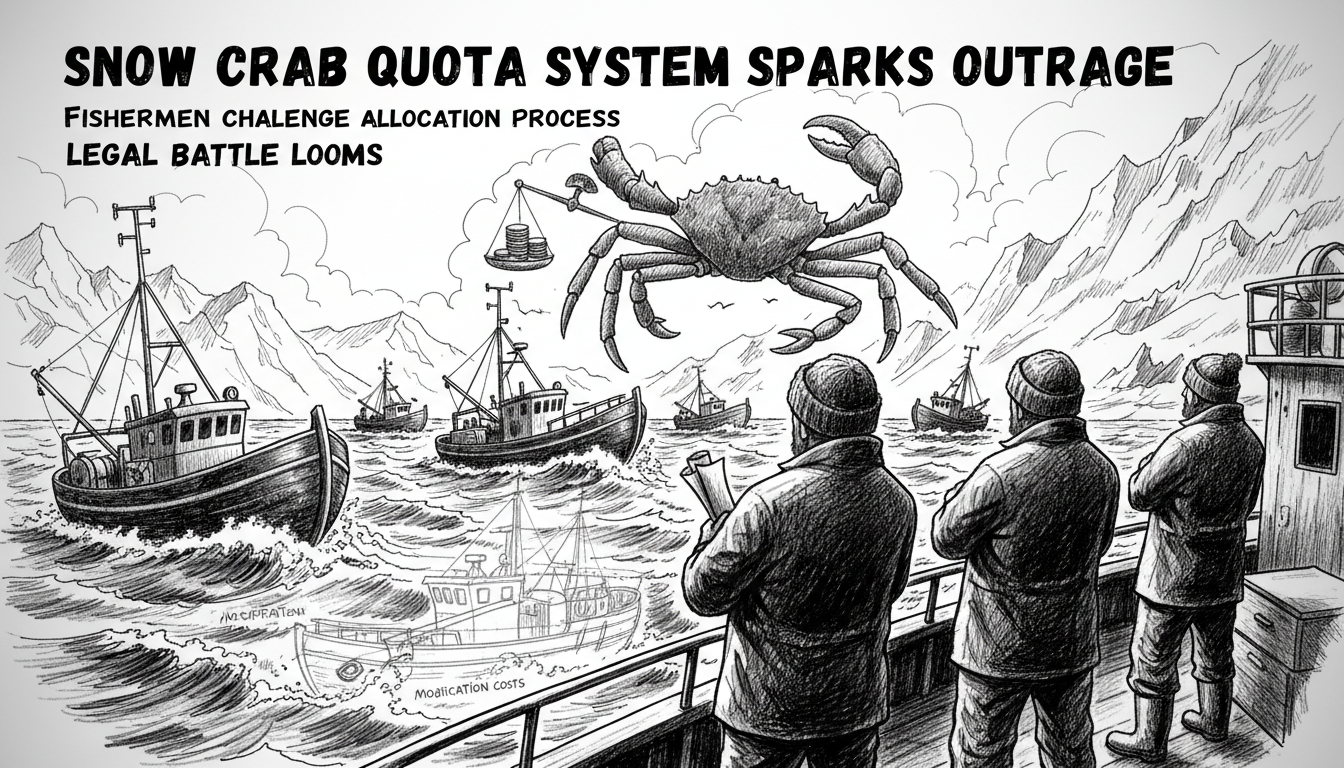Norwegian authorities face mounting criticism over their distribution of valuable snow crab fishing rights. The government gave away quotas worth billions of kroner to selected vessel owners, but active snow crab fishermen lost their rights in the process. The system required extensive vessel modifications as a key criterion for receiving the lucrative quotas.
Fisherman Kristian Kransvik from Lofoten represents those who lost their fishing rights despite having properly equipped vessels. He states authorities made fundamental errors from the beginning. The government missed the mark on day one, Kransvik says in a strong critique of the quota allocation process.
The financial stakes are enormous. Individual snow crab quotas carry values between 160 and 200 million kroner. Many recipients have already resold their quotas for massive profits. Meanwhile, established snow crab fishermen like Kransvik received rejections because their modification costs were deemed too low.
Kransvik's vessel was fully equipped and actively fishing for snow crab. Yet authorities denied his application due to insufficient investment in vessel upgrades. We had created a fine snow crab boat with our investments, he explains. The rejection cost his company a quota worth up to 200 million kroner.
The application process revealed questionable spending approvals. Vessel owners submitted costs for items ranging from COVID-19 tests to screws, nuts, and deck lighting. The fishing directorate approved these as legitimate snow crab investments.
Research institute Sintef provides technical expertise on snow crab fishing. Senior project manager Leif Grimsmo questions some approved equipment. When asked about plate freezers included in applications, he states they're not used for snow crab processing. Yet vessels received quotas based on these investments.
The vessel Sørøyfisk obtained its quota with 8.8 million kroner in modification costs. Owner Jim Rune Sørøy acknowledges they've never used their freezing equipment for crab. They only deliver live crab to market. Still, the freezing facility helped secure the valuable quota.
Fisheries directorate section chief Oddny Svendsen defends the assessment process. She notes that converting vessels for Barents Sea fishing may require different equipment than previous operations. Such investments can be part of a comprehensive evaluation, she explains.
Several active snow crab fishermen are now preparing lawsuits against the state. They claim the system unfairly penalized well-equipped vessels while rewarding inactive boats needing extensive renovations. Kransvik notes that operational fishing vessels automatically have lower modification costs than boats unused for years.
The controversy highlights fundamental questions about resource management. Fishing quotas should distribute scarce resources among vessels while preventing overfishing. In principle, the community owns marine resources. The current snow crab allocation has created tension along Norway's entire coast.
Industry representatives describe arbitrary decision-making. They feel authorities focused too much on receipt amounts rather than actual fishing needs. The process lacked proper understanding of what equipment snow crab fishing genuinely requires.
Norway's snow crab fishery represents a new economic opportunity. The species first appeared in the Barents Sea in 1996, likely migrating from eastern waters. Commercial fishing began in 2012, with proper quota systems established by 2017. The valuable resource now sits at the center of allocation controversies that may reshape Norway's fishing industry policies.

